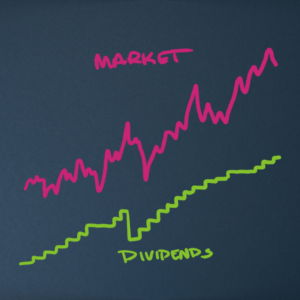
This year has been filled with dismal financial headlines. Crypto winter. Stock market declines. Significant bond market losses. Mortgage rates are skyrocketing. [insert apocalypse de jour] Amid the chaos, I want to provide some perspective on being a long-term investor and the benefits to long-term investing.
I was born in 1982.
The S&P 500 Index began in 1982 at 117.30. Fast forward some 40 years later, and at the time of this writing, the S&P 500 Index is shockingly close to 4,000.
Grabbing my handy financial planning calculator, I arrive at the fact the S&P 500 has earned approximately a 9.2% annualized rate of return.
I like to utilize the S&P 500 Index in examples because I think it is a good proxy for a diversified portfolio of companies that we know.
Even after this challenging year, an investment in 1982 would be up approximately 34x.
For example, a $10,000 investment into an S&P 500 index fund at the beginning of 1982 would currently be worth approximately $340,000. Hence why long-term investing can pay off!
In 1982, the S&P 500 fund paid $19.82 in dividends. Year-end [2022] put the S&P 500 dividend at approximately $65. During this period, the income from owning these companies has more than tripled.
Why do we long-term invest after all?
We invest to own a slice of companies and their cashflows!
We define risk as losing purchasing power.
Inflation is powerful. It cannot be ignored. It erodes our purchasing power.
The goal of investing is to increase our purchasing power.
The pursuit of generating returns above inflation.
Therefore, we believe it is imperative to be long-term owners of a diversified portfolio of companies.
There is substantial price fluctuation [volatility] in what someone is willing to pay for the companies from day-to-day and year-to-year.
History as our guide, we fully expect a 15% drop annually and a 35%+ drop approximately every five years on our statement.
Enduring volatility is the cost we must pay to earn the total return of the market.
It is simple but not easy.
Keep Making Additions!
Someone recently told me that they could only invest $100/month in an account, so they didn’t figure it would be worth it even to start.
Over 20 years at an 8% return, a $100/month contribution turns into approximately $59,000.
Over 30 years at an 8% return, a $100/month contribution turns into approximately $149,000.
This extra $100/month contribution could mean retiring a year or two earlier. Another benefit to long-term investing!
If anyone of your friends and family has financial or long-term investing questions, we are happy to be a sounding board for them. We would be happy to talk to them.
If they are important to you, they are important to us.
We are thankful for you.
–Nic & Jeff
We are a full-service financial advisory company that allows you to make a one-page plan for your money and prepare for your future. Learn more about what we do and how we can help you here.
_____________________







